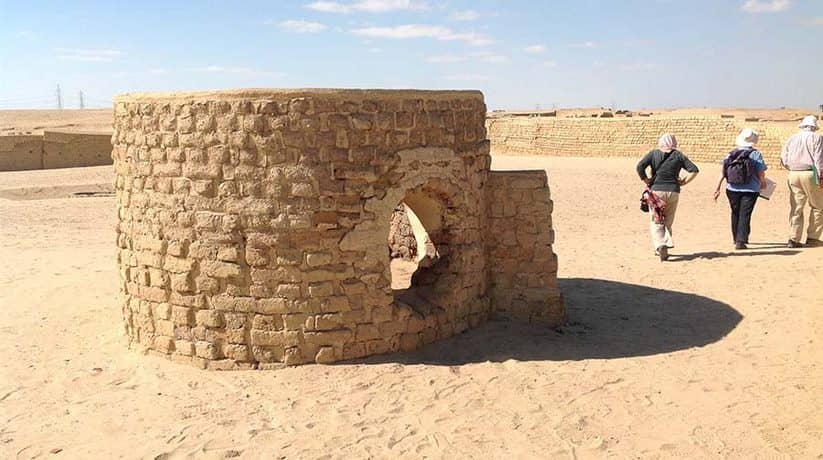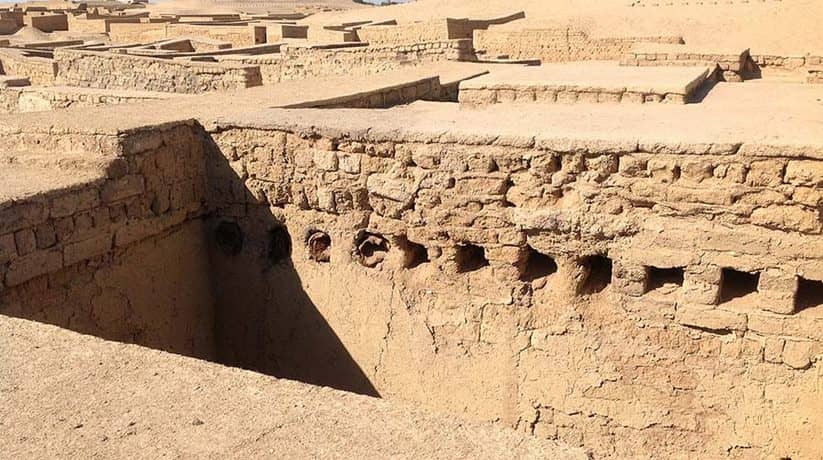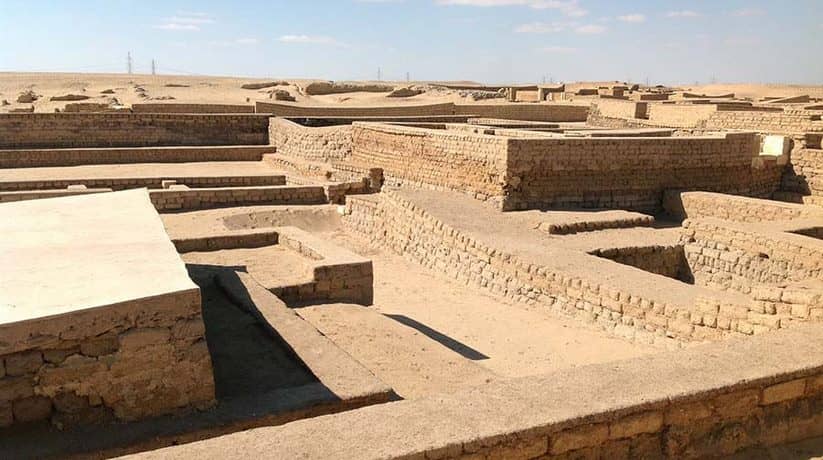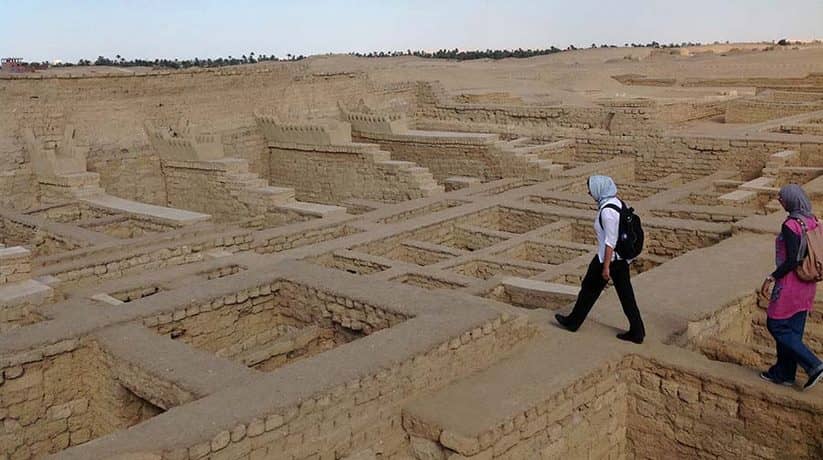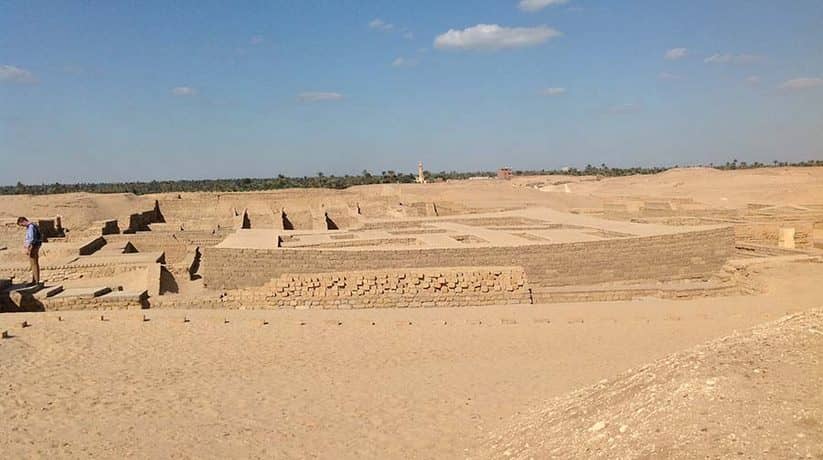Tebtunis Fayoum Egypt information, tours, prices, booking
Tebtunis Fayoum als called also Umm El Baragat or Um El Borigat. In fact, Tebtunis located in Fayoum, Egypt. The site covers some five hundred thousand square meters. Moreover, it occupied as early as the 12th Dynasty in the fourth century BC. Furthermore, it abandoned during the Fatimid Period. In fact, the sitewas a major cult center for the worship of the crocodile god, Sobek. Sobek was a major god and had different manifestations in different villages in Fayoum.
The first excavations at Tebtunis Fayoum site was between 1899 and 1900. In fact, these excavations done by Grenfell and Hunt. They kept few records, almost none of which survive. Their primary aim was to find papyri. In fact, they found human mummies with car-tonnage. It was in cemeteries to the west and south of the site. Moreover, they recovered papier-mch wrappings of old papyrus. Furthermore, they recovered crocodiles which wrapped in and stuffed with papyrus rolls. In fact. all date back to the later Ptolemaic period. They also dug in the main temple and the town and found Roman-period papyri. Furthermore, they cleared a Coptic church to the north.
Further details about Tebtunis Fayoum, Egypt:
The temple of Soknebtunis situated at the southwest corner of Tebtunis site. In fact, the site has paved path. This path approaches the temple form the south dates to the Roman reign of Augustus. Though, it built up over an earlier Ptolemaic path. Marking its beginning are the bases for a pair of lions. They also followed by a kiosk built of rusticated blocks in a walled enclosure. Between them, another Roman path which heads west into the desert. It perhaps led to a large, painted underground chamber. In fact, this chamber not discovered yet., but which may have been the funerary temple of Sobek. The pair of crouching lions beyond the kiosk mark the beginning of the older Ptolemaic path. Moreover, the next kiosk dates back to the early Ptolemaic Period.
During the Roman Period, dining rooms built on either side of the main path. In fact, the dining rooms used for club and family feasting. A fuller established opposite the lateral path. Behind the dining rooms to the west were blocks of Roman housing and merchants. The first block down terminated with four shops which open to the street to sell food. The next block, built over a Ptolemaic portico, known today as “the block of the papyri”. South of these, closer to the temple, were a few tower houses and small granaries. In fact, just before the temple stood a peristyle courtyard of fluted Ionic columns. It once plastered and painted to resemble marble built on a platform. There was a row of Doric columns to the east and a series of rooms to the north. The peristyle courtyard built during the first century BC.
More details about Tebtunis Fayoum, Egypt:
In fact, it was on the site of earlier buildings. Moreover, it modified in the first century AD, when the shrine added. Furthermore, part of it built over a public bath house. It was with small individual stone baths which dated to the third or second century BC. This structure replaced by a monumental bath house to its west. In fact, it was in use between the late second century BC through the first century AD. It had separate bathing rooms for men and women and a massive underground cistern. Tebtunis Fayoum main path finally ends at an open-air vestibule. In fact, they built either by Ptolemy XII or Augustus.
Moreover, stone walls of this structure adorned with reliefs. The reliefs depict the elaborate annual procession of the mummified crocodile. Up against the wall of the vestibule some one hundred small animals sacrificed. Moreover, they also buried during the Roman Period. The houses in the southwest corner of Tebtunis show various building phases. In fact, the houses structures built, abandoned and rebuilt on different plans. The irregular grid of streets and houses are visible in the central area of the site. In fact, they formed the Roman Period center of the village. It was when it reached its greatest extent.
Further details about Tebtunis Fayoum, Egypt:
By the fifty century Ac, the village of the site become a regional capital. In fact, it called Theodosiopolis. After the Arab invasion of Egypt its name reverted to Tutun. In fact, Coptic religious texts discovered elsewhere in Egypt. They attest to a flourishing school of scribes at Tutun. It was in the ninth and tenth centuries AD. Tebtunis also had at least four large churches. In fact, they built of reused material from older buildings, but with fine new wall paintings. The most impressive of these belonged to a monastic complex.
In fact, it had a columned nave and. In the tenth century adorned with striking painting of biblical scenes. Moreover, two of them depict Adam and Eve before and after the Fall. In fact, they survive in the Coptic Museum in Cairo. The ancient site of Tebtunis Fayoum completely abandoned by the eleventh century AC. It was when the name of the town transferred to a new village to the north of the ancient one.

